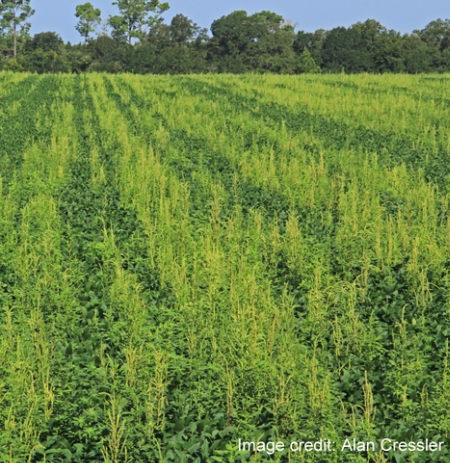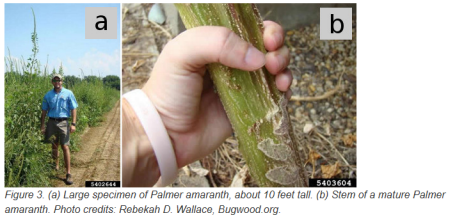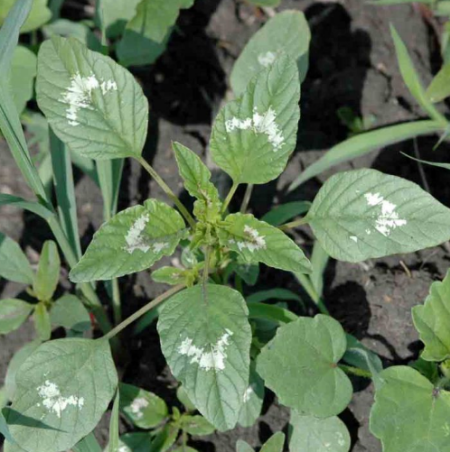Click below to listen to my 2 min. Garden Bite radio show: Palmer Amaranth
Audio PlayerAll above and below ground parts of the plant must be destroyed. Additionally, no transportation, propagation, or sale of these plants is allowed. Failure to comply may result in enforcement action by the county or local municipality. Whoa, what’s THAT about?
The dreaded Palmer amaranth, a runaway weed threatening ecological systems. Palmer amaranth is an annual plant native to the arid southwestern United States and northwestern Mexico.

It is a traditional food of Native Americans including the Navajo, Pima, Yuma and Mohave. In September of 2016, Palmer amaranth (Amaranthus palmeri) was initially discovered and confirmed in Minnesota.

To date, isolated populations have been documented in first year conservation plantings in several counties. It’s also invaded Wisconsin. While it IS an annual, it’s abundant seed keeps it coming back. In fact 1 plant can drop 250,000 seeds! And it’s a fast grower, reaching heights of at least 6 feet to, even as tall as 10 feet. It chokes out native plants.

Yet MORE information. It’s exceptionally destructive in crops. Some farmers have reported losses of up to 90% in corn crops. Palmer Amaranth looks similar to our native pigweed like Tall Waterhemp. The green leaves are smooth and arranged in an alternate pattern that grows symmetrically around the stem.
The leaves are oval to diamond-shaped. There is a small, sharp spine at the leaf tip. There are male and female plants. The leaves of some Palmer amaranth plants have a whitish V-shaped mark on them. Not all Palmer amaranth plants display this characteristic. It has developed resistance to multiple classes of herbicides and their different modes of action, making it very difficult and expensive to control.

